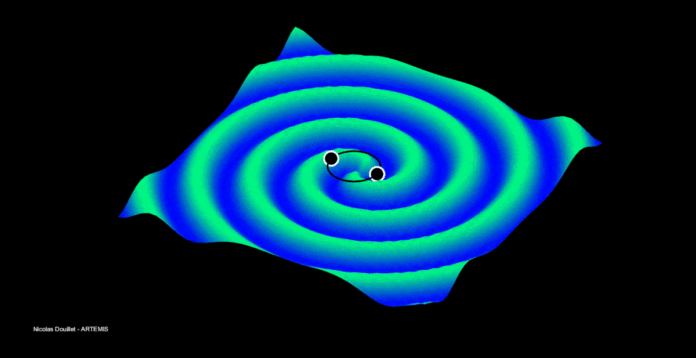In collaboration with the city of Nice, the Côte d’Azur Observatory is capturing the echoes of the cosmos during an unprecedented public conference on Thursday, October 9 at L’Artistique.
On September 14, 2015, scientists raised the alarm. The very first detection of gravitational waves had occurred. The Côte d’Azur Observatory offers a chance to revisit this major discovery with the astronomers who work on the subject.
Thus, on Thursday, October 9 at L’Artistique at 6:30 PM, they will recount the story of this famous discovery, its impacts in the scientific world, and explain the workings of current and future detection systems.
What is a gravitational wave?
These vibrations of space-time occur when two black holes at the other end of the cosmos orbit each other and then collide. Their masses—sometimes several million times that of our sun—locally distort this invisible soup that astronomers call space-time.
The minute vibrations of space-time reach us here on Earth and have been measurable since 2015. The detection systems that allow for this are pioneering tools that stretch over several kilometers, like LIGO in the United States or VIRGO in Europe.
They use two beams of light traveling several kilometers and eventually interacting with each other. When a gravitational wave reaches Earth, the path of the light beams is very slightly altered. This slight alteration is perceived only when the light beams recombine. Measuring this displacement allows us to identify what happened several billion light-years away.
A new frontier in astrophysics
This detection is a significant step forward because it first confirms Einstein’s theory of general relativity. It also provides new information about black holes, these objects that we cannot see.
This new measurement was such a revolution that in 2017, three scientists were awarded the Nobel Prize in Physics for their discovery (the highest scientific distinction). Today, a whole field of astrophysics is dedicated to analyzing these new data by comparing them with other measurement techniques; this is known as multi-messenger astrophysics.
So, see you this Thursday, October 9 at L’Artistique at 6:30 PM to ask all your questions to the astronomers from the Observatory.


